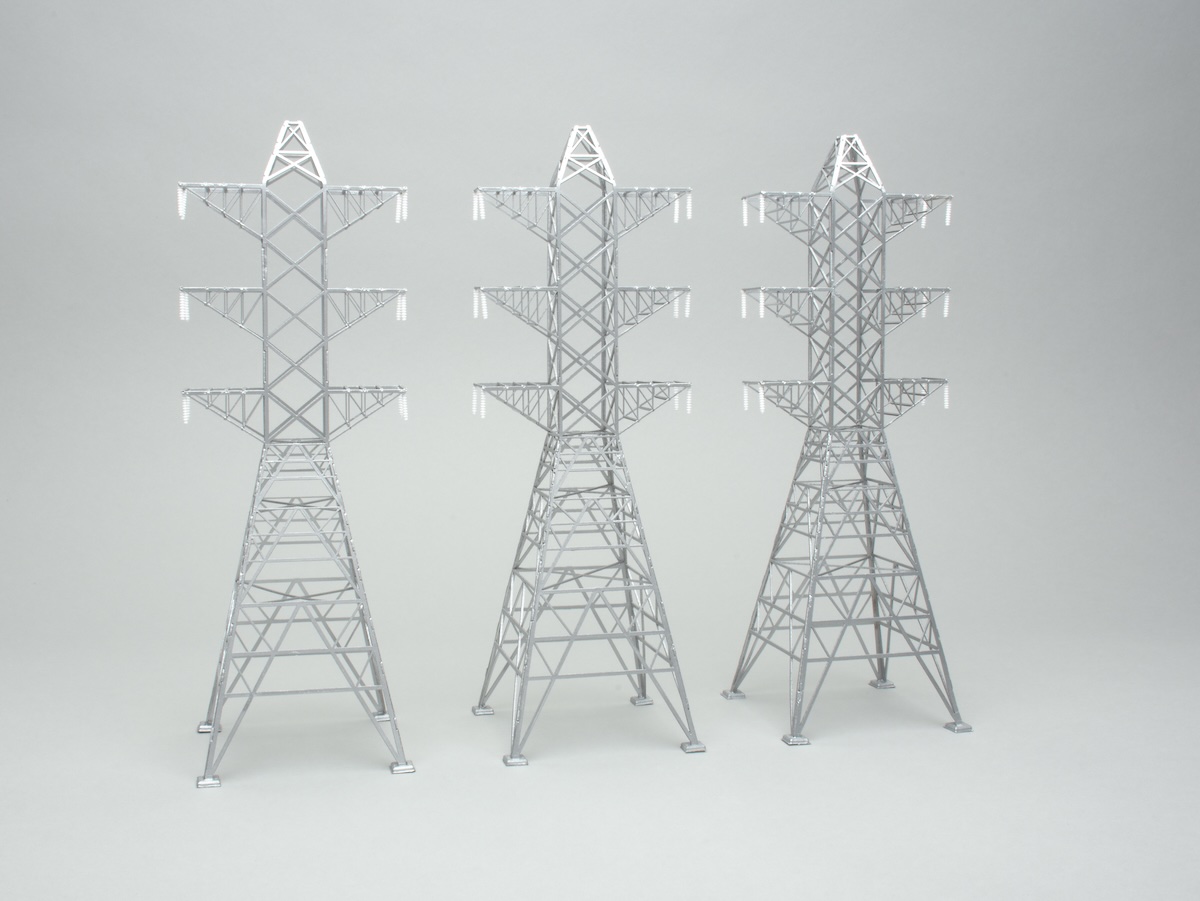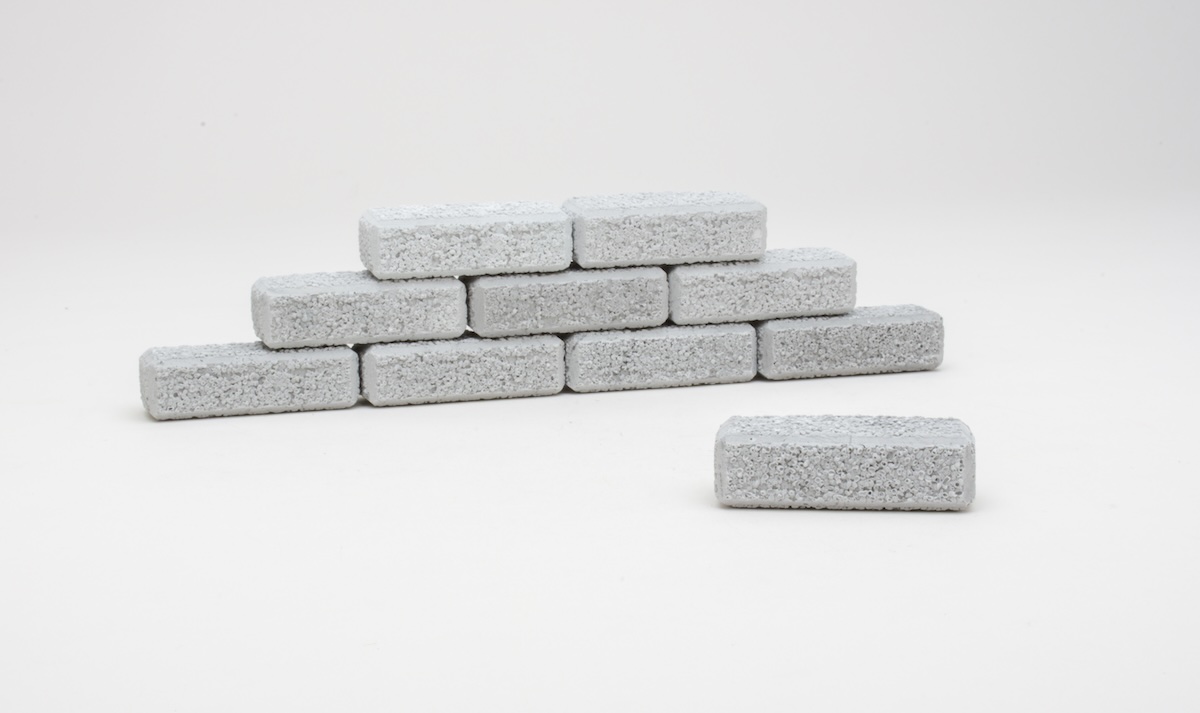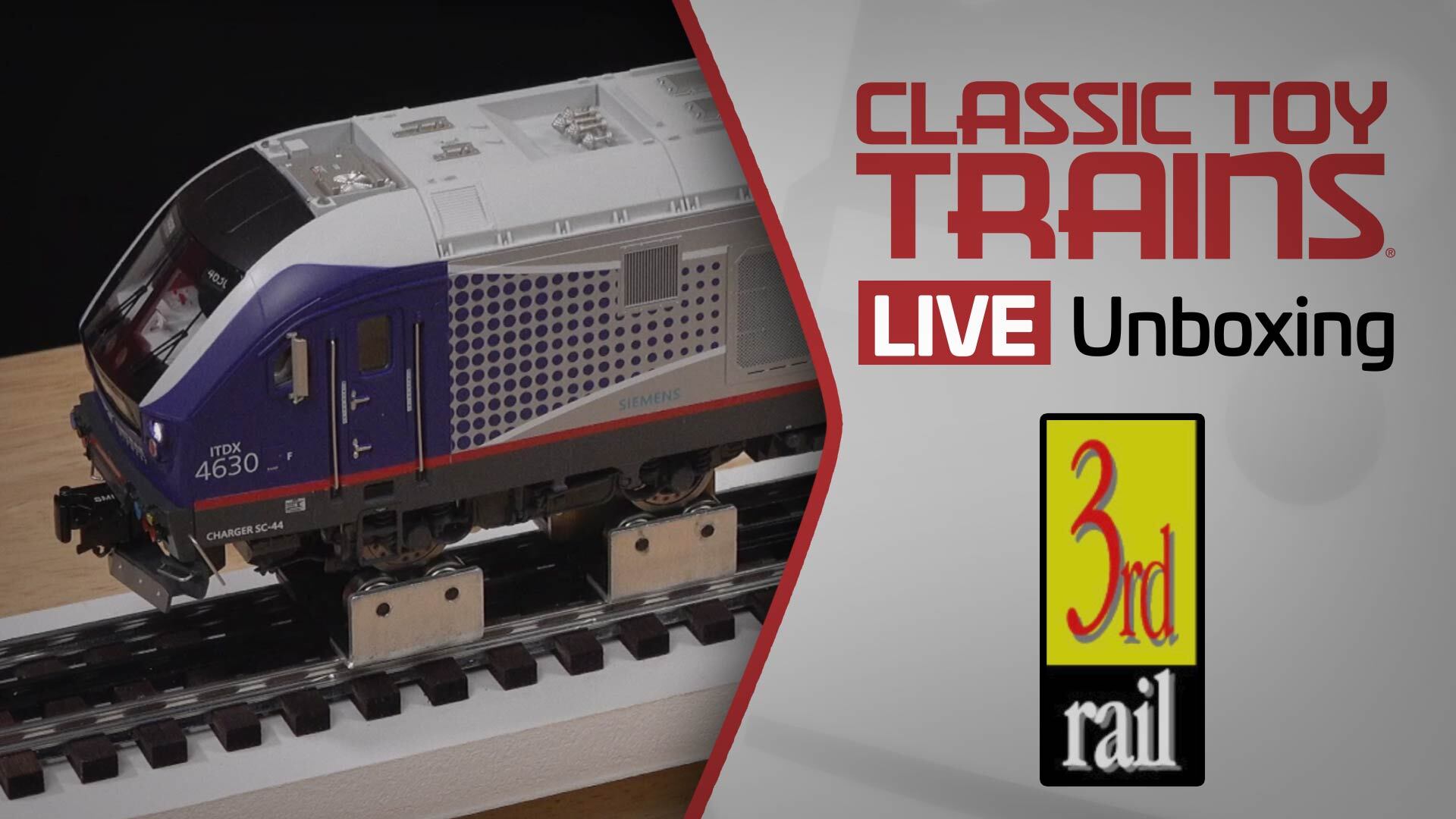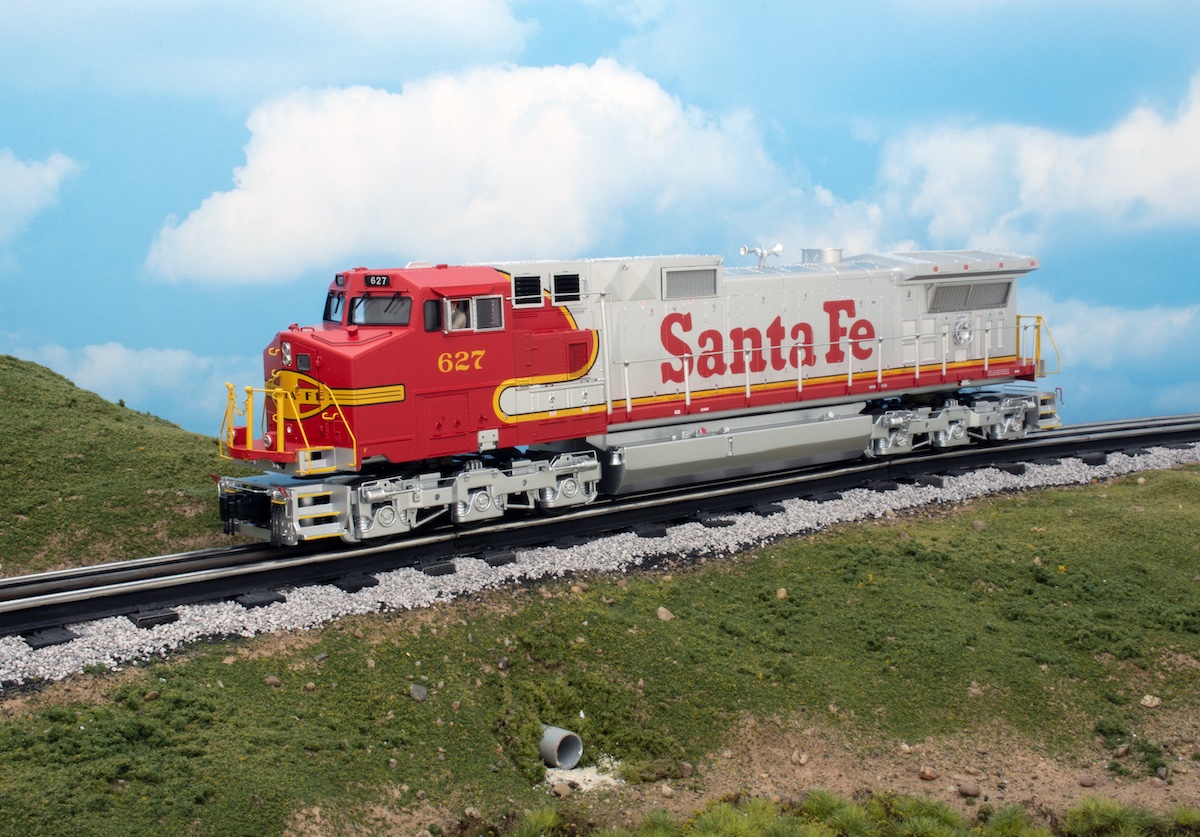The crazy idea was making a larger something out of a smaller something, in an effort to save a buck and get better performance. Quite a challenge, eh?
At the start of the 20th century, the Santa Fe had dabbled a bit with Mallets, ordering two 4-4-6-2s and two 2-8-8-2s from Baldwin. The railroad liked the the locomotive’s performance and was interested in acquiring more Mallets, but a bit cheaper than buying new gear. So the company’s shops in Topeka, Kan. cobbled together two 2-6-2 Prairie-type locomotives into a 2-6-6-2.
The Santa Fe liked the performance well enough that it eventually had 65 2-6-6-2s on its roster, although many of them were not conversions, but bought new from Baldwin.
Creating the 3000-series 2-10-10-2s by enlarging existing 2-10-2 locomotives was Santa Fe’s greatest experiment. In 1911, the railroad ordered 10 new front engines (a cylinder set, drive wheels, and boiler shell) from Baldwin and set about to mate them with the 2-10-2s.
The new section was attached to the front of the existing boiler. This section contained a feedwater heater, a high-pressure steam super heater, and a low-pressure steam reheater. Alas, they didn’t enhance performance enough to create a second locomotive’s worth of power from the relatively skinny boiler.
Baldwin also constructed 10 so-called “turtleback tenders” with rounded flanks and a capacity of 4,000 gallons of fuel oil and 12,000 gallons of water. The tenders outlived the locomotives they were paired with and were assigned to at least 17 other locomotives over the next four decades.
The real 2-10-10-2s were mainly used around Bakersfield, Barstow, and San Bernardino, Calif., largely as helpers pushing freight through the Cajon and Tehachapi Passes. As time passed, the Santa Fe’s engineering staff was unimpressed with the results and by 1917 had rebuilt the ten 2-10-10-2s into twenty 2-10-2s. The last original 2-10-2 was scrapped in 1953, and the last turtleback tender was scrapped a year later.
Opening the box
I’m afraid that the thing that grabs my attention first is the list price. $2,249.99. Wow. I don’t believe we have ever had a more expensive modern-production locomotive in the CTT offices. Did I say wow? Let me close my jaw.
What we received from Lionel wasn’t a standard consumer product, but a production sample. The detailing is as nice as any other premium locomotive I’ve tested. The add-on details are exquisite, and the cast-in features are all very clear and crisp.
The pilot is nice, with a distinctive “cow catcher” scale front coupler (interchangeable with a conventional coupler for double-heading or pushing), simulated brake lines that run up and over the pilot deck, and grab irons.
There are three wide decks rising up the front and two tall handrails that bracket them. The firebox has nice rivet and hinge detail and a number plate in the center. A headlight with number boards crowns the top.
Some distinctively different marker lights are located about a quarter-inch behind the smokebox face, attached to the handrails. The stack is very nice; unlike most models, it’s wider at the bottom and then slightly narrows.
There is piping and conduit galore above the running boards on both sides of the locomotive. I’m always a sucker for mini-valve handles, and this model has them! Some red, some black.
A pair of train boards/number boards is located behind the feedwater heater’s water supply pipes (just behind the first sand dome). These are illuminated and look pretty sharp.
You’ll certainly note two odd-looking jumbo pipes at the middle of the boiler. On the real thing, one line would carry steam from the boiler (at the rear) to the super heater (in the forward section), and the other pipe would carry the super-heated steam back to the rear high-pressure cylinders.
The boiler has a nice level of detail in cast-in rivets, boiler bands, and a seam in the top of the boiler (with latches). You’ll also find a bell, whistle, and pop-off values on the top.
Right beneath these pipes is a double-riveted band that is the place on the real locomotive where the front and rear boiler sections were held together.
The sides of the locomotive are very busy with piping, compressors, and other hardware. The running gear is first rate, and the sample I tested found the metal to be a subdued yet not overly darkened natural color.
There was a nearly perfect duplication of the amazing right side valve gear, which runs from the right front cylinder to a control in the cab.
The cab is a notch or three better than I was expecting. There is a decorated backhead, but with black and white readouts on the steam and pressure gauges where some models might have the gauges with markings. But the cab feature that drew applause is that the gauges were readable in the dark – yes indeed, you could see where the gauge needles were positioned.
There are two LEDs for cab illumination (one by each crewman). The window panes slide. The rooftop air vent seems designed to open (there is a matching opening on the inside of the cab roof), but it wouldn’t budge and I wasn’t going to to and force it open.
There is a deck plate to prevent the O scale fireman from falling.
Before we leave the locomotive, there are three innovative spots where controls are hidden: The first sand dome hides the Run/Program and speed control switches, the second dome hides the smoke unit on/off switch, and the third dome hides the whistle/blowdown switch. All the caps are held on with magnets.
The model has about the most interesting tender this side of maybe one of those gigantic Pennsy jobs.
Starting at the rear, this is very cool because it has its own “cow catcher,” or pilot. Certainly handy for running backward, as helper engines usually do for at least half their running time. There are no simulated brake lines, but there is a simulated uncoupler arm and a tall brake wheel.
There is a very respectable backup light, along with steps and a handrail that arcs up to the first level.
The water hatches lift, but you’ll just find flat metal beneath them. Taking a step up, to the upper level, you’ll find two marker lights next to two handrails. Lift the first fuel oil hatch, and you’ll find the volume control. Lift the second fuel hatch, and you’ll find the toggle for RailSounds for bell and whistle.
The upper deck atop the fuel bunker lifts out! It hides assorted circuit boards, but its main claim to fame is that it houses the backup battery. A metal lip at the front and two magnets at the back hold the top on the tender.
Paint on this model is pretty much black and white (okay, there is a touch of gray on the smokebox, too). The paint was flawless. and the lettering was clean and crisp.
On the test track
This model measures a tad over 30 inches in length and features 36 wheels. Accordingly, one of the first questions to pop up is, “What will it run on?” To our astonishment, the answer is O-54 or wider-diameter curves.
Let me say that it wasn’t the most enthusiastic O-54 engine I’ve ever run, and the overhang of the front boiler was pretty absurd.
Let me again state that this wasn’t a production model, and we had a minor hiccup or two. Our sample was received from Lionel without a Legacy module, which, of necessity, limited what we could test. Let me give a shout out to Jack at Sommerfeld’s Trains in Butler, Wis., who loaned us a 2-10-10-2 Legacy module to load in the workshop system, and to Remy and Scott at Lionel for their help with a programming glitch.
The locomotive’s 10-wheel driver sets have two power pickup rollers each, about 5½ inches apart, with an overall footprint of 12 inches. The tender has two three-axle wheel sets, each with a power pickup roller. There is a coil coupler on the rear. The speaker is located in the tender base.
Our low-speed average in conventional mode was 7.3 scale miles per hour, and the command-mode low-speed average was 2 scale miles per hour. Our high-speed average was 104 scale miles per hour. Drawbar pull was an impressive 3 pounds, 1 ounce, so this model certainly has the ability to dig in and move freight cars.
The premier feature touted in the literature is a whistle and blowdown effect, which propels smoke out (simulating steam). This feature needs to be enabled when the locomotive is powered up because it will not recognize the command after it is up and running. Just be sure the switch is flipped before you begin, and all will be well.
I can’t say that I saw smoke emitting from the top of the locomotive, but there was a nice quantity billowing out of the rear to coincide with a whooshing sound when triggered.
Smoke output was awesome and especially eye popping when the locomotive was running at the lowest speeds, allowing you to take in the four smoke chuffs per wheel revolution.
The model did have cab radio chatter, which was odd, considering when the last of these beasts was converted back to a 2-10-2.
For me, though, the standout feature was the whistle. This model possesses possibly the best, chill-evoking steam whistle I have ever heard. 1940s movie kind of good! You know, Michael Shayne and Boston Blackie on an express train rocketing through Nebraska, topped to the brim with Nazi spies and Mob diamond thieves up to no good, and each whistle blast covering the sound of blazing .45s. Okay, you get what I mean … larger than life!
I also liked being able to make unique variations of the whistle blast.
Although the locomotive’s detailing is worthy of a premium-priced model, the under-the-hood features are the main selling points, and these are pretty potent features. Great sound, superb detailing, and super-nice low-speed performance make this product stand out even among high-end steam locomotion.
Features: O-54 operation, die-cast metal boiler and tender, high torque motor, Legacy command and sound system, rear coil coupler, optional front coupler for double-heading, directional lighting, smoke unit and steam
exhaust effects capability.















It's a perfect train to display at your home or office! Only the price is the limit. I hope soon a same locomotive will be available in other scales as well. I wish I could a locomotive like this for my future layout.
I also hope that more of this free, non-subscriber product reviews will appear in the future.
Very nice looking loco one any one would love to have on a layout ! but I agre with Mr. Shawley the price is alitle steeeeep ! and would scare new combers to the hobby off. I am a G scalrer and have seen this very thing happening with our scale I hope the company's dont price them selves out of business. But I love this engine and would like to see one running some time.
This is a beautiful loco and I can tell you if you get the chance to see it in person it will blow your mind the smoke effects it's out of this world and the whistle will put a smile on your face that will be from ear to ear. The price is a little far out but if your serious about this hobby as most of us are once you own it you'll soon forget about the price.
The prices of this engine is equivalent to what it cost to put up half of the small layout I run now. Like the prices of gas these days, I want to run and play – but sometimes it is too expensive.
I'd put it on my mantle with stationary running track… If I had a mantle.
Great article and a great engine. Do agree that the suggested retail price is too steep. However, noticed that several dealers have listed this engine for $1800.
nice.. but way tooooo much money. im not sure how newbies looking to enter the hobby would react when you tell them it will cost about 3 to 4 grand to build a nice layout. i think alot of people will be scared away with sticker shock.
If they brought the price down to Earth, I'D buy one.
2250 for an engine is out of control. If I had that much money to spend on my layout I'm sure I would buy two or three lesser legacy engines. But I guess if you've got it, go for it. Another great review Bob.
TOO RICH FOR MY BLOOD AND TOO BIG FOR MY LAYOUT. LOOKS GOOD HOWEVER. WISH I COULD SEE IT RUNNING.
I wish I had the space to run the loco, also the money to buy it! The price is somewhat steep for me.
Wow ! Sounds exciting to say the least. I cannot relate to the price. I have a Lionel (LCCA) D&RGW, 4-6-2 with Railsounds that is the most fun engine to run and it runs just fine. I don't know that I need the more sophisticated "stuff" in the 2-10-10-2, and certainly not for that price. I'm sure that those who have the kind of disposable income to purchase this high-end engine will love it. I have been out of the hobby for several years and am just starting back into it with 2 grandchildren expressing an interest.